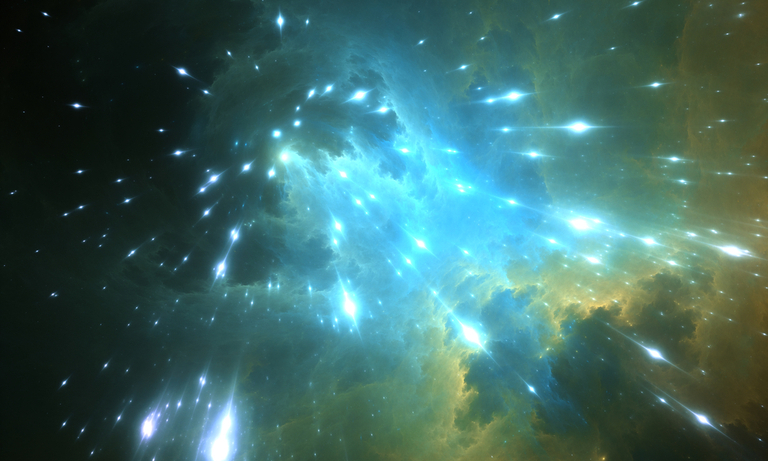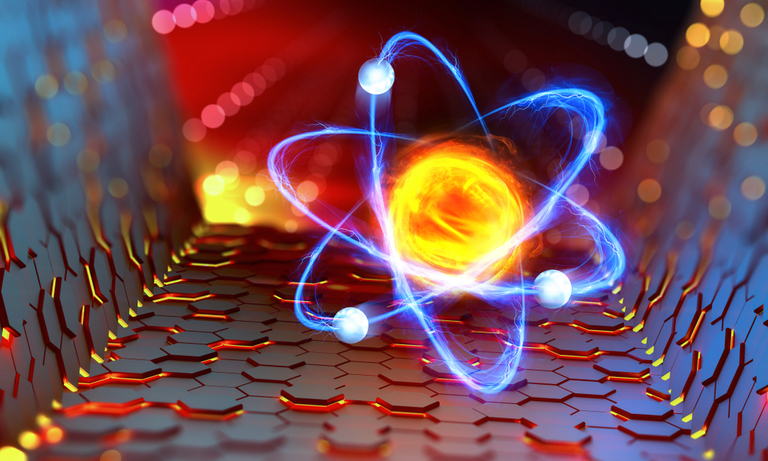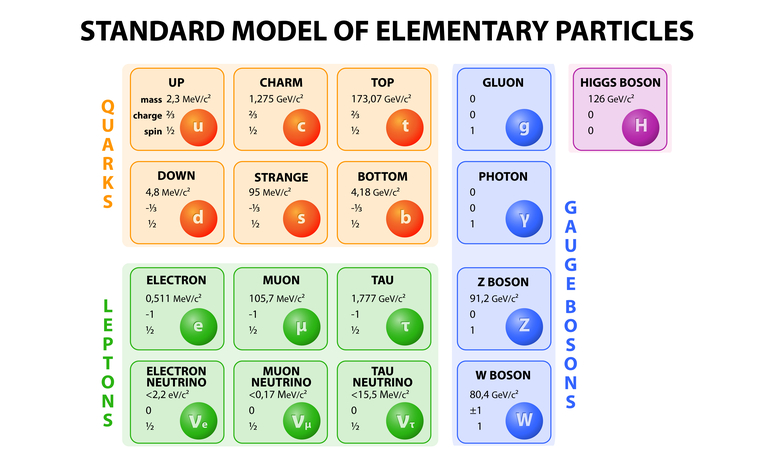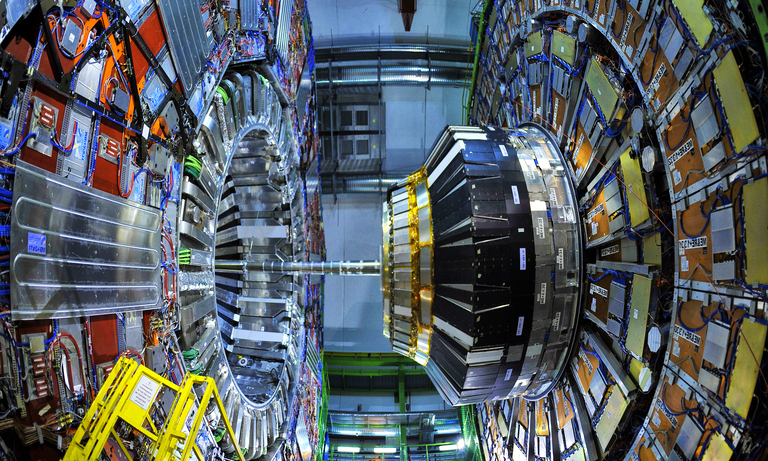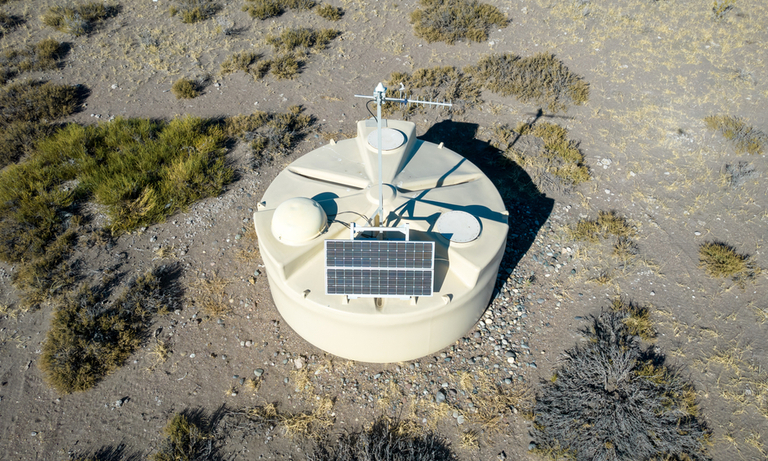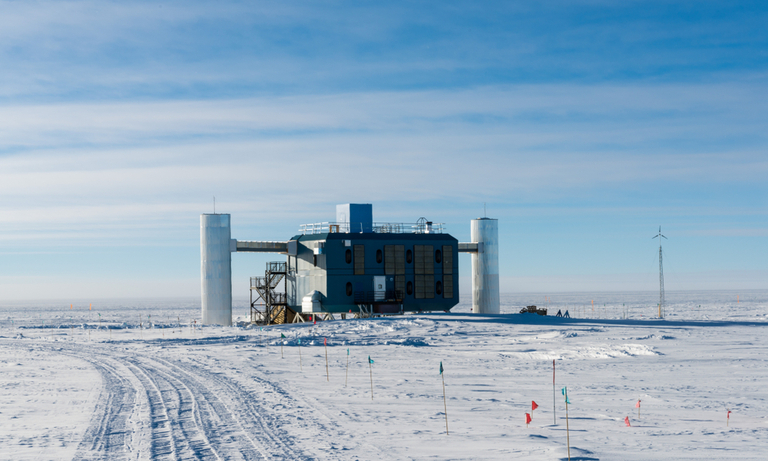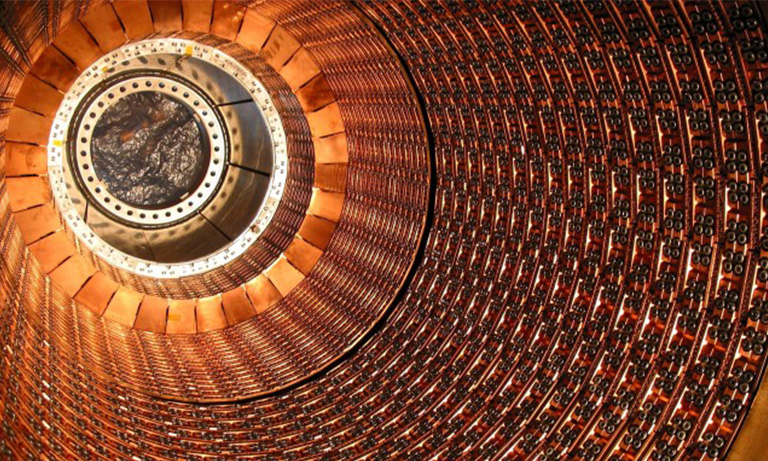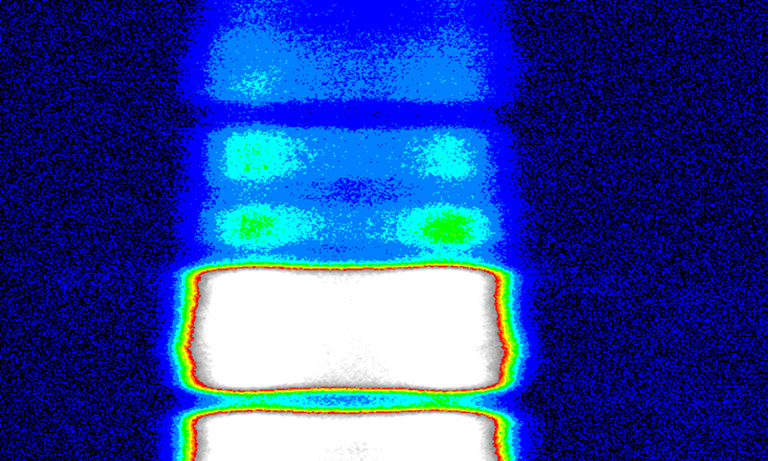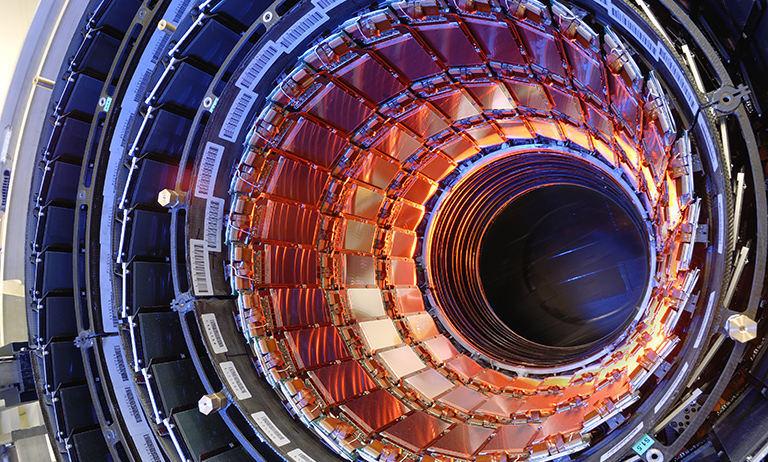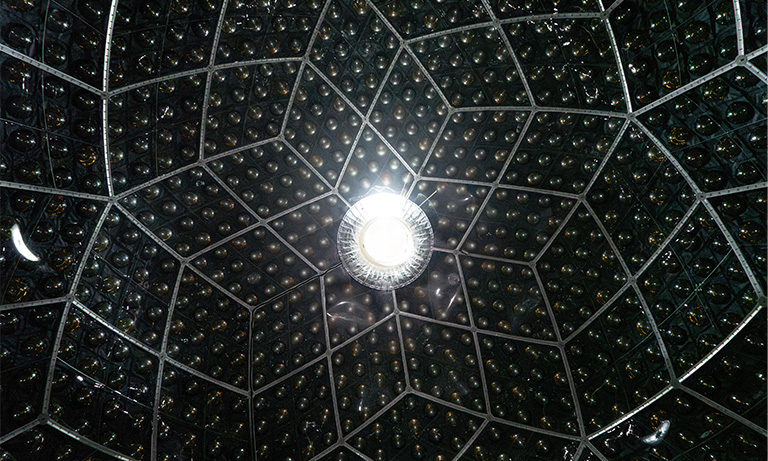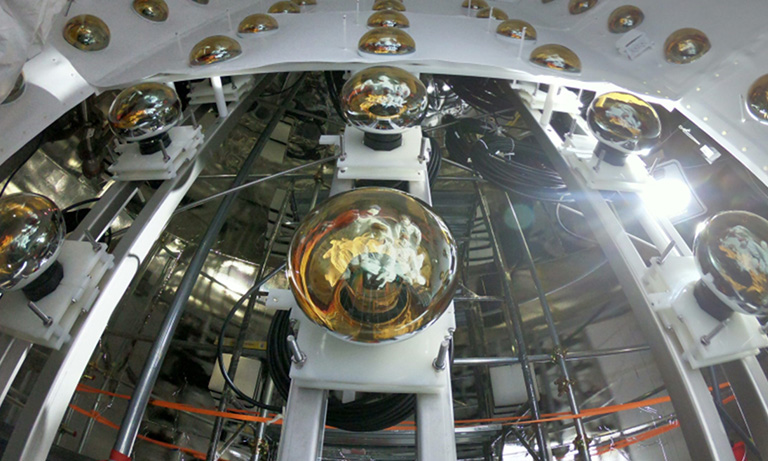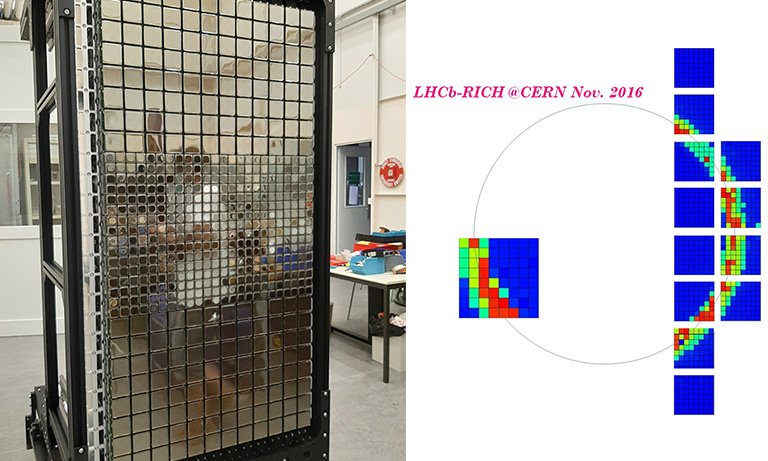Home
Products
Physics Research Field
Type of Experiment
Detector Type
Behind the Science
Tech in a Nutshell
United Kingdom (EN)
Select your region or country.

Tracker/Hodoscope
A hodoscope is an instrument used in particle detectors to determine the trajectories of charged particles crossing the detector, for this reason they are commonly known as particle trackers.
In high energy physics experiments, trackers are usually employed in vertex reconstruction and momentum measurement.
A particle tracker is made by position sensitive device, in order to provide a precise reconstruction of the particle path. Each position sensitive device is made either by a scintillator material optically coupled to a photodetector, or directly by a solid-state detector called a Silicon Strip Detectors.
In the former case, when a charged particle passes through the scintillating material, it transfers part of its energy to the scintillator. This is in turn emits an amount of light that is proportional to the transferred energy. The light is detected by the photodetector and is converted into an electrical signal. A threshold is usually set for each photodetector, therefore when a light signal over this threshold is detected it implies that a particle passed through the photodetector.
In the latter case, charged particles collide with silicon atoms, liberating electrons and creating an electric current, which indicates the path of the original particle. The spatial resolution of the particle trackers is always limited by the spatial resolution of the position sensitive device.
![]()
FIG. 1 CMS Inner tracker. It is possible to see the silicon strips with blue-violet colour
In high energy physics experiments, trackers are crucial in obtaining quantitative information on particle collisions. For this reason, they are usually located as close as possible to the interaction point. They are used for the reconstruction of the vertex events and of the particles momenta. The momentum can be measured by exploiting the Lorentz force, acting on charged particles moving in a magnetic field.
Starting from these considerations, all trackers must have the following characteristics: sensitivity to charged particles, good spatial resolution, small size to reduce the effect on the particle trajectories being measured, fast response to ease the particle identification through the signal timing and finally, low dead time to track high number of particles.
CMS (Compact Muon Solenoid) is one of the detectors of the Large Hadron Collider (LHC) accelerator located at CERN. The key feature of this experiment is the precise measurement of muons and consists of several shells of different detector elements. Particles created in the high-energy collisions in the very centre of the detector will first traverse the Inner Tracker (FIG. 1), a system of silicon sensors designed to detect charged particles.
![]()
FIG. 2 SSD by Hamamatsu for CMS Inner tracker
Outside of the Inner Tracker there are four more shells: the electromagnetic calorimeter, the hadronic calorimeter, a superconducting solenoid magnet and finally the muon chamber system, a gas detector system designed to measure the tracks of muons that pass through. Combined with the muon tracks measured in the Inner Tracker, the momentum of the muons can be determined with high precision.
The overall length of the inner tracker will be 5.4 m with a diameter of 2.4 m and the total weight is about 3 tons. It comprises 66 million pixels and 9.6 million silicon strips, each strip detectorhaving p+ strips on n-type bulk material. The strip pitch varies from 80 mm up to 205 mm.
The realization of the silicon strips for the inner part of the tracker was made by Hamamatsu Photonics (FIG. 2).
An example of a hodoscope obtained by coupling scintillators and photodetectors is provided by the upgrade of LHCb experiment. LHCb is a specialized b-physics experiment at LHC, that measures the parameters of CP violation in the interactions of b-hadrons (heavy particles containing a bottom quark).
It is set up to explore what happened immediately after the Big Bang which allowed matter to survive and build the Universe we inhabit today.
Its tracking system consists of four rectangular stations, each covering an area of about 40 m². The tracking detectors provide a high precision estimate of the momentum of charged particles which leads to a precise mass resolution for decayed particles.
Currently two different detector technologies are employed: the Silicon Tracker, which is placed close to the beam pipe, uses Silicon Strip Detectors to detect passing particles, whereas the Outer Tracker, which is situated further from the beam pipe, is made up of thousands of gas-filled straw tubes.
![]()
FIG. 3 Principle of operation of the SciFi tracker module.
In 2018, the tracking stations will be replaced by a Scintillating Fibre Tracker (SciFi Tracker/SFT) which will cover the full acceptance after the magnet. The detector modules will have 2.5 m long scintillating fibres with a diameter of 250 μm. The fibres will be read out by Silicon Photomultipliers (MPPCs, also known as SiPMs).
The multi-channel detector arrays are designed for a channel pitch of 250 μm and an height that can cover the stack height for six layers of fibres. The number of channels per detection module is 128 which is built of two 64 channel MPPCs.
These modules will use the Hamamatsu MPPC array model S13552. The photons produced along the trajectory of the particle are propagated to the fibre end and further to the detector. Each pixel of the detector can detect one photon and the signal is proportional to the total number of pixels.
The signal (coloured pixels) is the signal amplitude per channel illustrated in the top part of the figure 3. The particle position can be calculated with a weighted mean value of the channel signal. In order to suppress thermal noise (single fired pixel), hits will be considered as clusters of at least two fired pixels.
- Confirmation
-
It looks like you're in the . If this is not your location, please select the correct region or country below.
You're headed to Hamamatsu Photonics website for GB (English). If you want to view an other country's site, the optimized information will be provided by selecting options below.
In order to use this website comfortably, we use cookies. For cookie details please see our cookie policy.
- Cookie Policy
-
This website or its third-party tools use cookies, which are necessary to its functioning and required to achieve the purposes illustrated in this cookie policy. By closing the cookie warning banner, scrolling the page, clicking a link or continuing to browse otherwise, you agree to the use of cookies.
Hamamatsu uses cookies in order to enhance your experience on our website and ensure that our website functions.
You can visit this page at any time to learn more about cookies, get the most up to date information on how we use cookies and manage your cookie settings. We will not use cookies for any purpose other than the ones stated, but please note that we reserve the right to update our cookies.
1. What are cookies?
For modern websites to work according to visitor’s expectations, they need to collect certain basic information about visitors. To do this, a site will create small text files which are placed on visitor’s devices (computer or mobile) - these files are known as cookies when you access a website. Cookies are used in order to make websites function and work efficiently. Cookies are uniquely assigned to each visitor and can only be read by a web server in the domain that issued the cookie to the visitor. Cookies cannot be used to run programs or deliver viruses to a visitor’s device.
Cookies do various jobs which make the visitor’s experience of the internet much smoother and more interactive. For instance, cookies are used to remember the visitor’s preferences on sites they visit often, to remember language preference and to help navigate between pages more efficiently. Much, though not all, of the data collected is anonymous, though some of it is designed to detect browsing patterns and approximate geographical location to improve the visitor experience.
Certain type of cookies may require the data subject’s consent before storing them on the computer.
2. What are the different types of cookies?
This website uses two types of cookies:
- First party cookies. For our website, the first party cookies are controlled and maintained by Hamamatsu. No other parties have access to these cookies.
- Third party cookies. These cookies are implemented by organizations outside Hamamatsu. We do not have access to the data in these cookies, but we use these cookies to improve the overall website experience.
3. How do we use cookies?
This website uses cookies for following purposes:
- Certain cookies are necessary for our website to function. These are strictly necessary cookies and are required to enable website access, support navigation or provide relevant content. These cookies direct you to the correct region or country, and support security and ecommerce. Strictly necessary cookies also enforce your privacy preferences. Without these strictly necessary cookies, much of our website will not function.
- Analytics cookies are used to track website usage. This data enables us to improve our website usability, performance and website administration. In our analytics cookies, we do not store any personal identifying information.
- Functionality cookies. These are used to recognize you when you return to our website. This enables us to personalize our content for you, greet you by name and remember your preferences (for example, your choice of language or region).
- These cookies record your visit to our website, the pages you have visited and the links you have followed. We will use this information to make our website and the advertising displayed on it more relevant to your interests. We may also share this information with third parties for this purpose.
Cookies help us help you. Through the use of cookies, we learn what is important to our visitors and we develop and enhance website content and functionality to support your experience. Much of our website can be accessed if cookies are disabled, however certain website functions may not work. And, we believe your current and future visits will be enhanced if cookies are enabled.
4. Which cookies do we use?
There are two ways to manage cookie preferences.
- You can set your cookie preferences on your device or in your browser.
- You can set your cookie preferences at the website level.
If you don’t want to receive cookies, you can modify your browser so that it notifies you when cookies are sent to it or you can refuse cookies altogether. You can also delete cookies that have already been set.
If you wish to restrict or block web browser cookies which are set on your device then you can do this through your browser settings; the Help function within your browser should tell you how. Alternatively, you may wish to visit www.aboutcookies.org, which contains comprehensive information on how to do this on a wide variety of desktop browsers.
5. What are Internet tags and how do we use them with cookies?
Occasionally, we may use internet tags (also known as action tags, single-pixel GIFs, clear GIFs, invisible GIFs and 1-by-1 GIFs) at this site and may deploy these tags/cookies through a third-party advertising partner or a web analytical service partner which may be located and store the respective information (including your IP-address) in a foreign country. These tags/cookies are placed on both online advertisements that bring users to this site and on different pages of this site. We use this technology to measure the visitors' responses to our sites and the effectiveness of our advertising campaigns (including how many times a page is opened and which information is consulted) as well as to evaluate your use of this website. The third-party partner or the web analytical service partner may be able to collect data about visitors to our and other sites because of these internet tags/cookies, may compose reports regarding the website’s activity for us and may provide further services which are related to the use of the website and the internet. They may provide such information to other parties if there is a legal requirement that they do so, or if they hire the other parties to process information on their behalf.
If you would like more information about web tags and cookies associated with on-line advertising or to opt-out of third-party collection of this information, please visit the Network Advertising Initiative website http://www.networkadvertising.org.
6. Analytics and Advertisement Cookies
We use third-party cookies (such as Google Analytics) to track visitors on our website, to get reports about how visitors use the website and to inform, optimize and serve ads based on someone's past visits to our website.
You may opt-out of Google Analytics cookies by the websites provided by Google:
https://tools.google.com/dlpage/gaoptout?hl=en
As provided in this Privacy Policy (Article 5), you can learn more about opt-out cookies by the website provided by Network Advertising Initiative:
http://www.networkadvertising.org
We inform you that in such case you will not be able to wholly use all functions of our website.
Close


